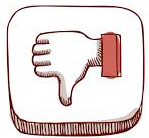Article
Mobile marketing: methods and strategies
Introduction
One of the main goals of mobile marketing is to drive traffic to the end product. The professionals who choose target audiences, design creative banners, create and run ad campaigns are called media buyers.
Their efforts directly affect how many times your app is downloaded, the position in app stores, and ultimately, your resulting profit. Many advertisers buy traffic from advertising agencies that already have entire media buying departments, or agencies that work directly with freelance: media buyers or webmasters.
Their efforts directly affect how many times your app is downloaded, the position in app stores, and ultimately, your resulting profit. Many advertisers buy traffic from advertising agencies that already have entire media buying departments, or agencies that work directly with freelance: media buyers or webmasters.

Competition for users is high. In order to get downloads for a reasonable price in terms of unit economics, you need to use a wide variety of advertising methods and constantly adapt your strategies to drive downloads. Mobio has over 20 media buyers who attract 250,000 installs daily for clients all over the world.
In this post, we'll share some basic methods and approaches to mobile traffic arbitrage.
In this post, we'll share some basic methods and approaches to mobile traffic arbitrage.
Mobile Traffic Arbitrage
As a definition, we usually use the formula: Arbitrage = Science + Art, where
Science — analytics, mathematics, and testing;
Art — creatives and marketing.
An effective combination of these concepts is the key to a successful ad campaign.
Good media buyers are perseverant and highly focused (1 source, 1 offer) and are not deterred if 90% of their efforts are failures and only 10% are successful.
Science — analytics, mathematics, and testing;
Art — creatives and marketing.
An effective combination of these concepts is the key to a successful ad campaign.
Good media buyers are perseverant and highly focused (1 source, 1 offer) and are not deterred if 90% of their efforts are failures and only 10% are successful.

Outsourcing vs. in-house team
It's obviously better to have your own team of media buyers. But this comes with both advantages and disadvantages.
Easier to guarantee traffic
transparency.
You can take on more interesting
client projects.
Expertise and knowledge resources
available (if you don't know for sure, just ask!) —
two heads (or three or five) are better than one.
Accumulation of knowledge allows for fast scaling.
transparency.
You can take on more interesting
client projects.
Expertise and knowledge resources
available (if you don't know for sure, just ask!) —
two heads (or three or five) are better than one.
Accumulation of knowledge allows for fast scaling.
Not enough experienced media buyers available and you need to train your own.
Difficult to create a win-win for media buyers.
Long-range investment that is recovered only as expertise and technologies develop.
Scaling requires processes and technologies.
Difficult to create a win-win for media buyers.
Long-range investment that is recovered only as expertise and technologies develop.
Scaling requires processes and technologies.
Advantages
Disadvantages


Working on a team makes it possible to test different verticals and advertising platforms. After testing hundreds of offers, it's easy to understand which banners and which ads are most effective for various themes, such as Travel, E-commere, Dating, Games, or Utilities.
We already know the best way to approach every vertical, platform, and geo segment, which means we can avoid many mistakes in the future.
But growth doesn't happen without some bumps along the way. The main thing is not to be afraid of making mistakes; it's the only way to gain experience, and with experience comes profit.
A basic example of developing creatives for a ticket sale app:
We already know the best way to approach every vertical, platform, and geo segment, which means we can avoid many mistakes in the future.
But growth doesn't happen without some bumps along the way. The main thing is not to be afraid of making mistakes; it's the only way to gain experience, and with experience comes profit.
A basic example of developing creatives for a ticket sale app:

You can also use phrases like this:
"Recommended by Oryol i Reshka";
"Help with vacation planning";
"Availability of cheap winter holiday tickets has decreased by 23% over the past month".
The creativity of banners plays an important role in mobile advertising, since the productivity indicators are directly related to it:
Better banner = higher CTR = cheaper clicks
Better banner = higher CR = cheaper installs
Banner creativity is an important topic that we'll discuss in a separate article later.
"Recommended by Oryol i Reshka";
"Help with vacation planning";
"Availability of cheap winter holiday tickets has decreased by 23% over the past month".
The creativity of banners plays an important role in mobile advertising, since the productivity indicators are directly related to it:
Better banner = higher CTR = cheaper clicks
Better banner = higher CR = cheaper installs
Banner creativity is an important topic that we'll discuss in a separate article later.
Narrow targeting
The key to success with this method is to correctly choose a focused target audience for the app and design effective banners for it.
Banners should be carefully matched to the audience in their color, image, style, terminology, slang, and so on.
Here are some examples:
Choose groups by theme: maternity hospitals, breast feeding, pregnancy, January babies, February babies, April births, etc.
Banners should be carefully matched to the audience in their color, image, style, terminology, slang, and so on.
Here are some examples:
Choose groups by theme: maternity hospitals, breast feeding, pregnancy, January babies, February babies, April births, etc.

Take a creative and set a target: All women, All Russia, iOS.
The result is CTR 0.86% and CR 14%.
The result is CTR 0.86% and CR 14%.
7 sins
This approach takes advantage of traditional human weaknesses: laziness, greed, envy, pride, wrath, sloth and lust.
This method is very effective for dating sites if you create a separate ad message targeted at each "vice". Example:
Laziness: "Guaranteed dates in your city. Search within 3 km of your location. All beautiful women. 30-second signup. Many of our ladies are ready to go out today."
Greed: "Prepare to date at least one new woman every week after signing up in this app."
Envy: "7% of men get 54% of all likes and comments from women. How do they do it? First they sign up on our site."
Pride: "Your ex will hate you when she sees you with these gorgeous women."
Wrath: "How could she dare to not reply? Don't lose hope — keep calm! And sign up on this site to meet girls who will give you a chance."
Sloth: "Are you embarrassed that you still don't have a girlfriend? Are you lonely? Sign up on the site."
Lust: "Are you looking for a good time tonight? A lot of ladies on our site are looking for a guy to spend tonight with."
More life hacks for generating advertising strategies:
Study the target audience (ratings of apps in the app stores will show you what drives users crazy and what they are looking for). Read feedback about your competitors, press releases, and reviews.
Constantly monitor advertising in AdMobiSpy and Publer. Follow how other apps are advertising and take notes.
In Popsters, track trends in social networks, popular apps, and memes.
Study Wordstat to find out what users are searching for.
This method is very effective for dating sites if you create a separate ad message targeted at each "vice". Example:
Laziness: "Guaranteed dates in your city. Search within 3 km of your location. All beautiful women. 30-second signup. Many of our ladies are ready to go out today."
Greed: "Prepare to date at least one new woman every week after signing up in this app."
Envy: "7% of men get 54% of all likes and comments from women. How do they do it? First they sign up on our site."
Pride: "Your ex will hate you when she sees you with these gorgeous women."
Wrath: "How could she dare to not reply? Don't lose hope — keep calm! And sign up on this site to meet girls who will give you a chance."
Sloth: "Are you embarrassed that you still don't have a girlfriend? Are you lonely? Sign up on the site."
Lust: "Are you looking for a good time tonight? A lot of ladies on our site are looking for a guy to spend tonight with."
More life hacks for generating advertising strategies:
Study the target audience (ratings of apps in the app stores will show you what drives users crazy and what they are looking for). Read feedback about your competitors, press releases, and reviews.
Constantly monitor advertising in AdMobiSpy and Publer. Follow how other apps are advertising and take notes.
In Popsters, track trends in social networks, popular apps, and memes.
Study Wordstat to find out what users are searching for.
Automation
For best results, the next step is to automate your interaction with ad platforms:
- Scripts to launch a new offer;
- Scripts to scale offer volumes;
- Bidding: CPM vs CPC;
- Working with targetings, lookalikes, and so on.
Sign up for our newsletter
Case studies from media buyers every week

